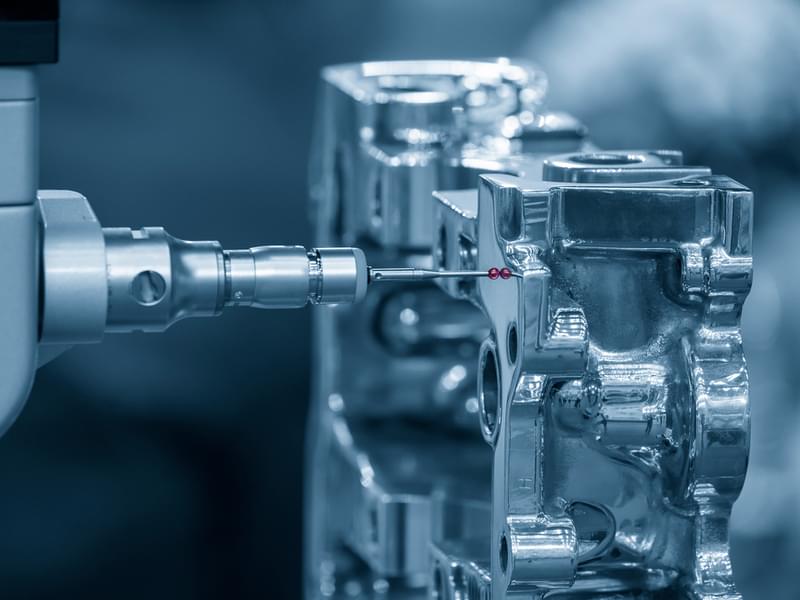ISO 9001 and IATF 16949 outline two important quality management systems. While there are extensive similarities between the two, there are also critical differences. Before detailing a side-by-side comparison of the requirements for ISO 9001:2015 vs. IATF 16949, it's crucial to understand each standard.
What Is ISO 9001:2015?
ISO 9001:2015 is the global quality standard that applies to the delivery of all products and services from agriculture to zinc processing. It comprises 10 sections, including:
- Context of the organization
- Leadership
- Planning
- Support
- Operation
- Performance evaluation
- Improvement
This standard requires that companies demonstrate a:
- Consistent ability to deliver acceptable products and services to customers while conforming to regulations
- Clear-cut goal of enhancing satisfaction through continual improvement processes while maintaining conformity
What Is IATF 16949?
Formerly known as ISO/TS 16949, IATF 16949 is the global quality standard that applies specifically to the automotive industry. The International Automotive Task Force (IATF) developed the basis of its 16949 standard in 1999. In 2002, the standard expanded to include the requirements of ISO 9001. While many people still ask about the difference between TS 16949 and ISO 9001, the more relevant question concerns the differences between ISO 9001 and IATF 16949.
Differences Between ISO 9001 and IATF 16949
The most fundamental difference between ISO 9001 and IATF 16949 involves the entities responsible for the standards. ISO 9001 is managed by the International Organization for Standardization, while IATF 16949 was devised by the IATF with significant input from automotive industry members, including automakers and groups like the Automotive Industry Action Group.
Furthermore, ISO 9001 centers on customer satisfaction, but IATF 16949 goes further, necessitating compliance with company-specific requirements outlined in the standard. Additionally, ISO 9001 can apply to any location operated by an organization, while IATF 16949 focuses only on sites that develop, produce or service OEM auto parts — not aftermarket parts.

A Side-by-Side Comparison of Requirements for ISO 9001:2015 vs. IATF 16949
In understanding the differences between the standards, it's essential to look at a side-by-side comparison of the requirements for ISO 9001:2015 vs. IATF 16949. Again, while some people request an ISO 9001 vs. TS 16949 comparison, it's important to remember that the current standard is IATF 16949.
Here's a section-by-section breakdown of some of the significant differences between ISO 9001 and IATF 16949:
Section 4 (Context of the Organization)
ISO 9001 references the quality management system and its processes. IATF 16949 also addresses product safety and conformance of products and processes.
Section 5 (Leadership)
ISO 9001 centers generally on leadership and commitment. IATF 16949 adds a focus on issues like corporate responsibility, process owners and process effectiveness and efficiency.
Section 6 (Planning)
ISO 9001 addresses actions to address risks and opportunities. IATF 16949 also includes risk analysis, preventative action and contingency plans.
Section 7 (Support)
ISO 9001 touches on resources, people, infrastructure and measurement traceability. IATF 16949 adds references to plant, facility and equipment planning and elaborates on calibration and laboratory requirements.
Section 8 (Operation)
ISO 9001 references issues like operational planning and control, design and development planning and the type and extent of control of externally provided processes, products and services. IATF 16949 includes further requirements concerning confidentiality, product design skills, supplier monitoring and second-party audits.
Section 9 (Performance Evaluation)
ISO 9001 centers on concepts like monitoring, measurement, analysis and
evaluation. IATF 16949 adds specifications about issues like the identification of statistical tools and the application of statistical concepts.
Section 10 (Improvement)
ISO 9001 touches on nonconformity and corrective action. IATF 16949 focuses on additional issues like problem solving, error proofing and warranty management systems.
This side-by-side comparison of the requirements for ISO 9001:2015 vs. IATF 16949 outlines just a few of the many differences between ISO 9001 and IATF 16949. Still, it provides a good illustration of the way IATF 16949 goes above and beyond ISO 9001.
Beyond IATF 16949 vs. ISO 9001
Despite the differences of IATF 16949 vs. ISO 9001, it's crucial to remember that IATF 16949 is based on ISO 9001 and incorporates all ISO 9001 requirements. Adhering to either standard delivers significant benefits like:
- Improved internal management
- Reduced waste
- Increased efficiency, productivity and profits
- Higher employee engagement
- Better customer retention and acquisition
- Consistent outcomes that can be monitored and measured
Trust Smithers With Your IATF 16949 Needs
IATF 16949 incorporates a wide range of requirements and specifications with a focus on manufacturer-specific provisions and frequent updates. You need a partner you can rely on to help you navigate the standard's intricacies. Smithers has years of experience with IATF 16949 certifications. In fact, we're one of the few United States-based auditing certification bodies approved by the IATF to certify companies to the IATF 16949:2016 standard. Furthermore, we ensure our auditors undergo the extensive training, testing and re-qualification needed to meet the IATF's rigorous requirements.
Contact us today for the IATF 16949 assistance you need.






